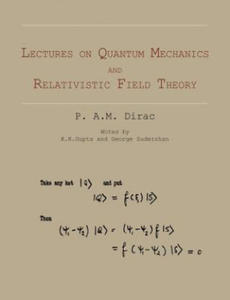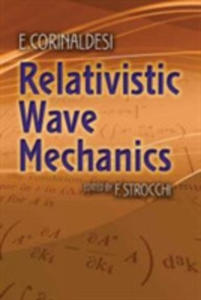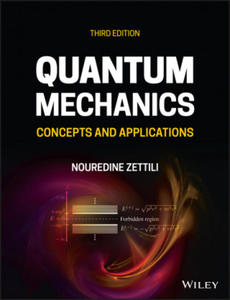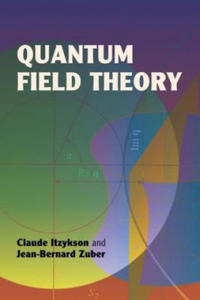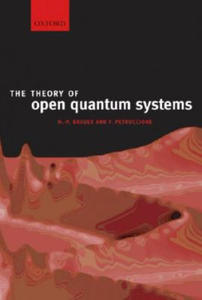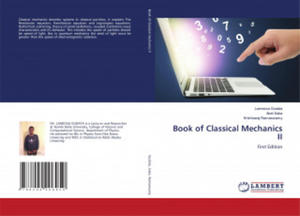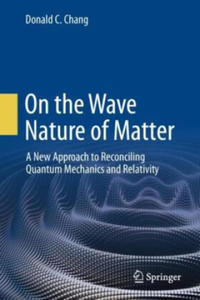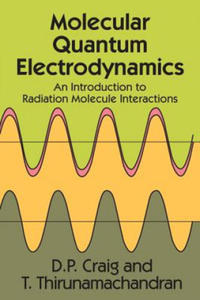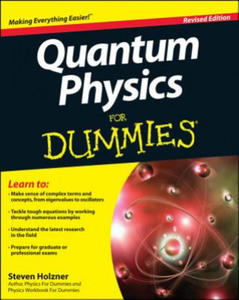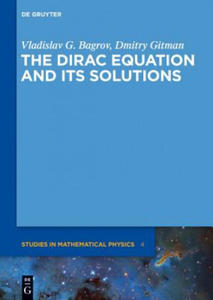libristo relativistic quantum mechanics wave equations 6810039
- znaleziono 20 produkty w 2 sklepach
Lectures on Quantum Mechanics and Relativistic Field Theory Martino Fine Books
Książki / Literatura obcojęzyczna
2012 Reprint of 1955 Edition. Exact facsimile of the original edition, not reproduced with Optical Recognition Software. Dirac is widely regarded as one of the world's greatest physicists. He was one of the founders of quantum mechanics and quantum electrodynamics. His early contributions include the modern operator calculus for quantum mechanics, which he called transformation theory, and an early version of the path integral. His relativistic wave equation for the electron was the first successful attack on the problem of relativistic quantum mechanics. Dirac founded quantum field theory with his reinterpretation of the Dirac equation as a many-body equation, which predicted the existence of antimatter and matter-antimatter annihilation. He was the first to formulate quantum electrodynamics, although he could not calculate arbitrary quantities because the short distance limit requires renormalization. Dirac discovered the magnetic monopole solutions, the first topological configuration in physics, and used them to give the modern explanation of charge quantization. He developed constrained quantization in the 1960s, identifying the general quantum rules for arbitrary classical systems. These lectures were given delivered and published during his tenure at Princeton's Institute for Advanced Study in the 1930's.
Sklep: Libristo.pl
Relativistic Wave Mechanics
Książki Obcojęzyczne>Angielskie>Mathematics & science>Physics>Relativity physicsKsiążki Obcojęzyczne>Angielskie>Mathematics & scienc...
0x001a906a00000000
Sklep: Gigant.pl
Quantum Mechanics - Concepts and Applications 3e John Wiley & Sons Inc
Książki / Literatura obcojęzyczna
An innovative approach to quantum mechanics that seamlessly combines textbook and problem-solving book into oneQuantum Mechanics: Concepts and Applications provides an in-depth treatment of this fundamental theory, combining detailed formalism with straightforward practice. Thoroughly integrating close to seven hundred examples, solved problems, and exercises into a well-structured and concise text, the textbook offers instructors a pedagogically sound teaching tool, students a clear, balanced and modern approach to the subject, and researchers a quick practical guide.The book begins with a thorough description of the origins of quantum physics before discussing the mathematical tools required in the field and the postulates upon which it is founded. Quantum Mechanics is broad in scope, covering such aspects as one-dimensional and three-dimensional potentials, angular momentum, rotations and addition of angular momenta, identical particles, time-independent and -dependent approximation methods, scattering theory, relativistic quantum mechanics, and classical field theory among others. Each of these diverse areas are enhanced with a rich collection of illustrative examples and fully-solved problems to ensure complete understanding of this complex topic.Readers of the third edition of Quantum Mechanics will also find:* Two new chapters --- one dealing with relativistic quantum mechanics and the other with the Lagrangian derivations of the Klein-Gordon and Dirac equations --- and three new appendices to support them* Numerous solved examples integrated throughout the text that are intended to illustrate individual concepts within a broader topic* An abundance of fully-solved problems at the end of each chapter that integrate multiple concepts introduced throughout the chapter and are generally comprehensive* A large collection of unsolved exercises that may be used to practice the ideas presented* A manual that is available to those instructors adopting the book by request offering comprehensive solutions to all exercisesQuantum Mechanics is a comprehensive textbook which is most useful to senior undergraduate and first-year graduate students seeking mastery of the field, as well as to researchers in need of a quick, practical reference for the various techniques necessary for optimal performance in the subject.
Sklep: Libristo.pl
Quantum Field Theory Dover Publications Inc.
Książki / Literatura obcojęzyczna
PrefaceGeneral References1. Classical Theory 1.1 Principle of Least Action 1.1.1 Classical Motion 1.1.2 Electromagnetic Field as an Infinite Dynamical System 1.1.3 Electromagnetic Interaction of a Point Particle 1.2 Symmetries and Conservation Laws 1.2.1 Fundamental Invariants 1.2.2 Energy Momentum Tensor 1.2.3 Internal Symmetries 1.3 Propagation and Radiation 1.3.1 Green Functions 1.3.2 Radiation2. The Dirac Equation 2.1 Toward a Relativistic Wave Equation 2.1.1 Quantum Mechanics and Relativity 2.1.2 The Dirac Equation 2.1.3 Relativistic Covariance 2.2 Physical Content 2.2.1 Plane Wave Solutions and Projectors 2.2.2 Wave Packets 2.2.3 Electromagnetic Coupling 2.2.4 Foldy-Wouthuysen Transformation 2.3 Hydrogen-like Atoms 2.3.1 Nonrelativistic versus Relativistic Spectrum 2.3.2 Dirac Theory 2.4 Hole Theory and Charge Conjugation 2.4.1 Reinterpretation of Negative Energy Solutions 2.4.2 Charge Conjugation 2.4.3 Zero-Mass Particles 2.5 Dirac Propagator 2.5.1 Free Propagator 2.5.2 Propagation in an Arbitrary External Electromagnetic Field 2.5.3 Application to the Coulomb Scattering 2.5.4 Fock-Schwinger Proper Time Method3. Quantization--Free Fields 3.1 Canonical Quantization 3.1.1 General Formulation 3.1.2 Scalar Field 3.1.3 Charged Scalar Field 3.1.4 Time-Ordered Product 3.1.5 Thermodynamic Equilibrium 3.2 Quantized Radiation Field 3.2.1 Indefinite Metric 3.2.2 Propagator 3.2.3 Massive Vector Field 3.2.4 Vacuum Fluctuations 3.3 Dirac Field and Exclusion Principle 3.3.1 Anticommutators 3.3.2 Fock Space for Fermions 3.3.3 Relation between Spin and Statistics--Propagator 3.4 Discrete Symmetries 3.4.1 Parity 3.4.2 Charge Conjugation 3.4.3 Time Reversal 3.4.4 Summary4. Interaction with an External Field 4.1 Quantized Electromagnetic Field Interacting with a Classical Source 4.1.1 Emission Probabilities 4.1.2 Emitted Energy and the Infrared Catastrophe 4.1.3 Induced Absorption and Emission 4.1.4 S Matrix and Evolution Operator 4.2 Wick's Theorem 4.2.1 Bose Fields 4.2.2 Fermi Fields 4.2.3 General Case 4.3 Quantized Dirac Field Interacting with a Classical Potential 4.3.1 General Formalism 4.3.2 Emission Rate to Lowest Order 4.3.3 Pair Creation in a Constant Uniform Electric Field 4.3.4 The Euler-Heisenberg Effective Lagrangian5. Elementary Processes 5.1 S Matrix and Asymptotic Theory 5.1.1 Cross Sections 5.1.2 Asymptotic Theory 5.1.3 Reduction Formulas 5.1.4 Generating Functional 5.1.5 Connected Parts 5.1.6 Fermions 5.1.7 Photons 5.2 Applications 5.2.1 Compton Effect 5.2.2 Pair Annihilation 5.2.3 Positronium Lifetime 5.2.4 Bremsstrahlung 5.3 Unitarity and Causality 5.3.1 Unitarity and Partial Wave Decomposition 5.3.2 Causality and Analyticity 5.3.3 The Jost-Lehmann-Dyson Representation 5.3.4 Forward Dispersion Relations 5.3.5 Momentum Transfer Analyticity6. Perturbation Theory 6.1 Interaction Representation and Feynman Rules 6.1.1 Self-Interacting Scalar Field 6.1.2 Feynman Rules for Spinor Electrodynamics 6.1.3 Electron-Electron and Electron-Positron Scattering 6.1.4 Scalar Electrodynamics 6.2 Diagrammatics 6.2.1 Loopwise Expansion 6.2.2 Truncated and Proper Diagrams 6.2.3 Parametric Representation 6.2.4 Euclidean Green Functions 6.3 Analyticity Properties 6.3.1 Landau Equations 6.3.2 Real Singularities 6.3.3 Real Singularities of Simple Diagrams 6.3.4 Physical-Region Singularities. Cutkosky Rules7. Radiative Corrections 7.1 One-Loop Renormalization 7.1.1 Vacuum Polarization 7.1.2 Electron Propagator 7.1.3 Vertex Function 7.1.4 Summary 7.2 Radiative Corrections to the Interaction with an External Field 7.2.1 Effective Interaction and Anomalous Magnetic Moment 7.2.2 Radiative Corrections to Coulomb Scattering 7.2.3 Soft Bremsstrahlung 7.2.4 Finite Inclusive Cross Section 7.3 New Effects 7.3.1 Photon-Photon Scattering 7.3.2 Lamb Shift 7.3.3 Van der Waals Forces at Large Distances8. Renormalization 8.1 Regularization and Power Counting 8.1.1 Introduction 8.1.2 Regularization 8.1.3 Power Counting 8.1.4 Convergence Theorem 8.2 Renormalization 8.2.1 Normalization Conditions and Structure of the Counterterms 8.2.2 Bogoliubov's Recursion Formula 8.2.3 Zimmermann's Explicit Solution 8.2.4 Renormalization in Parametric Space 8.2.5 Finite Renormalizations 8.2.6 Composite Operators 8.3 Zero-Mass Limit, Asymptotic Behavior, and Weinberg's Theorem 8.3.1 Massless Theories 8.3.2 Ultraviolet Behavior and Weinberg's Theorem 8.4 The Case of Quantum Electrodynamics 8.4.1 Formal Derivation of the Ward-Takahashi Identities 8.4.2 Pauli-Villars Regularization to All Orders 8.4.3 Renormalization 8.4.4 Two-Loop Vacuum Polarization9. Functional Methods 9.1 Path Integrals 9.1.1 The Role of the Classical Action in Quantum Mechanics 9.1.2 Trajectories in the Bargmann-Fock Space 9.1.3 Fermion Systems 9.2 Relativistic Formulation 9.2.1 S Matrix and Green Functions in Terms of Path Integrals 9.2.2 Effective Action and Steepest-Descent Method 9.3 Constrained Systems 9.3.1 General Discussion 9.3.2 The Electromagnetic Field as an Example 9.4 Large Orders in Perturbation Theory 9.4.1 Introduction 9.4.2 Anharmonic Oscillator10. Integral Equations and Bound-State Problems 10.1 The Dyson-Schwinger Equations 10.1.1 Field Equations 10.1.2 Renormalization 10.2 Relativistic Bound States 10.2.1 Homogeneous Bethe-Salpeter Equation 10.2.2 The Wick Rotation 10.2.3 Scalar Massless Exchange in the Ladder Approximation&n 12.3 The Effective Action at the One-Loop Order 12.3.1 General Form 12.3.2 Two-Point Function 12.3.3 Other Functions 12.3.4 One-Loop Renormalization 12.4 Renormalization 12.4.1 Slavnov-Taylor Identities 12.4.2 Identities for Proper Functions 12.4.3 Recursive Construction of the Counterterms 12.4.4 Gauge Dependence of Green Functions 12.4.5 Anomalies 12.5 Massive Gauge Fields 12.5.1 Historical Background 12.5.2 Massive Gauge Theory 12.5.3 Spontaneous Symmetry Breaking 12.5.4 Renormalization of Spontaneously Broken Gauge 12.5.5 Gauge Independence and Unitarity of the S Matrix 12.6 The Weinberg-Salam Model 12.6.1 The Model for Leptons 12.6.2 Electron-Neutrino Cross Sections 12.6.3 Higher-Order Corrections 12.6.4 Incorporation of Hadrons13. Asymptotic Behavior 13.1 Effective Charge in Electrodynamics 13.1.1 The Gell-Mann and Low Function 13.1.2 The Callan-Symanzik Equation 13.2 Broken Scale Invariance 13.2.1 Scale and Conformal Invariance 13.2.2 Modified Ward Identities 13.2.3 Callan-Symanzik Coefficients to Lowest Order 13.3 Scale Invariance Recovered 13.3.1 Coupling Constant Flow 13.3.2 Asymptotic Freedom 13.3.3 Mass Corrections 13.4 Deep Inelastic Lepton-Hadron Scattering and Electron-Positron Annihilation into Hadrons 13.4.1 Electroproduction 13.4.2 Light-Cone Dynamics 13.4.3 Electron-Positron Annihilation 13.5 Operator Product Expansions 13.5.1 Short-Distance Expansion 13.5.2 Dominant and Subdominant Operators, Operator Mixing, and Conservation Laws 13.5.3 Light-Cone ExpansionAppendixA-1 MetricA-2 Dirac Matrices and SpinorsA-3 Normalization of States, S Matrix, Unitarity, and Cross SectionsA-4 Feynman RulesIndex
Sklep: Libristo.pl
Quantum Mechanics Springer
Książki / Literatura obcojęzyczna
Diese grundlegende Einführung in die Quantenmechanik mit zahlreichen durchgerechneten Beispielen und Übungen mit vollständigen Lösungen wurde für die vierteAuflage überarbeitet. Die gründliche Darstellung packt alle Fragen der Quantenmechanik an und bietet Studierenden einen kompetenten Studienbegleiter.§"Quantum Mechanics - An Introduction" lays the foundations for the rest of the course on advanced quantum mechanics and field theory. Starting from black-body radiation, the photoelectric effect, and wave-particle duality, Greiner goes on to discuss the uncertainty relations, spin, and many-body systems; he includes applications to the hydrogen atom and the Stern-Gerlach and Einstein-de Haas experiments. The mathematics of representation theory, S matrices, perturbation theory, eigenvalue problems, and hypergeometric differential equations are presented in detail, with 84 fully and carefully worked examples and exercises to consolidate the material. This fourth edition has been corrected and is presented in both a new cover and a new format.§
Sklep: Libristo.pl
Variational Principles of Mechanics Dover Publications
Książki / Literatura obcojęzyczna
Introduction 1. The variational approach to mechanics 2. The procedure of Euler and Lagrange 3. Hamilton's procedure 4. The calculus of variations 5. Comparison between the vectorial and the variational treatments of mechanics 6. Mathematical evaluation of the variational principles 7. Philosophical evaluation of the variational approach to mechanics I. The Basic Concepts of Analytical Mechanics 1. The Principal viewpoints of analytical mechanics 2. Generalized coordinates 3. The configuration space 4. Mapping of the space on itself 5. Kinetic energy and Riemannian geometry 6. Holonomic and non-holonomic mechanical systems 7. Work function and generalized force 8. Scleronomic and rheonomic systems. The law of the conservation of energy II. The Calculus of Variations 1. The general nature of extremum problems 2. The stationary value of a function 3. The second variation 4. Stationary value versus extremum value 5. Auxiliary conditions. The Lagrangian lambda-method 6. Non-holonomic auxiliary conditions 7. The stationary value of a definite integral 8. The fundamental processes of the calculus of variations 9. The commutative properties of the delta-process 10. The stationary value of a definite integral treated by the calculus of variations 11. The Euler-Lagrange differential equations for n degrees of freedom 12. Variation with auxiliary conditions 13. Non-holonomic conditions 14. Isoperimetric conditions 15. The calculus of variations and boundary conditions. The problem of the elastic bar III. The principle of virtual work 1. The principle of virtual work for reversible displacements 2. The equilibrium of a rigid body 3. Equivalence of two systems of forces 4. Equilibrium problems with auxiliary conditions 5. Physical interpretation of the Lagrangian multiplier method 6. Fourier's inequality IV. D'Alembert's principle 1. The force of inertia 2. The place of d'Alembert's principle in mechanics 3. The conservation of energy as a consequence of d'Alembert's principle 4. Apparent forces in an accelerated reference system. Einstein's equivalence hypothesis 5. Apparent forces in a rotating reference system 6. Dynamics of a rigid body. The motion of the centre of mass 7. Dynamics of a rigid body. Euler's equations 8. Gauss' principle of least restraint V. The Lagrangian equations of motion 1. Hamilton's principle 2. The Lagrangian equations of motion and their invariance relative to point transformations 3. The energy theorem as a consequence of Hamilton's principle 4. Kinosthenic or ignorable variables and their elimination 5. The forceless mechanics of Hertz 6. The time as kinosthenic variable; Jacobi's principle; the principle of least action 7. Jacobi's principle and Riemannian geometry 8. Auxiliary conditions; the physical significance of the Lagrangian lambda-factor 9. Non-holonomic auxiliary conditions and polygenic forces 10. Small vibrations about a state of equilibrium VI. The Canonical Equations of motion 1. Legendre's dual transformation 2. Legendre's transformation applied to the Lagrangian function 3. Transformation of the Lagrangian equations of motion 4. The canonical integral 5. The phase space and the space fluid 6. The energy theorem as a consequence of the canonical equations 7. Liouville's theorem 8. Integral invariants, Helmholtz' circulation theorem 9. The elimination of ignorable variables 10. The parametric form of the canonical equations VII. Canonical Transformations 1. Coordinate transformations as a method of solving mechanical problems 2. The Lagrangian point transformations 3. Mathieu's and Lie's transformations 4. The general canonical transformation 5. The bilinear differential form 6. The bracket expressions of Lagrange and Poisson 7. Infinitesimal canonical transformations 8. The motion of the phase fluid as a continuous succession of canonical transformations 9. Hamilton's principal function and the motion of the phase fluid VIII. The Partial differential equation of Hamilton-Jacobi 1. The importance of the generating function for the problem of motion 2. Jacobi's transformation theory 3. Solution of the partial differential equation by separation 4. Delaunay's treatment of separable periodic systems 5. The role of the partial differential equation in the theories of Hamilton and Jacobi 6. Construction of Hamilton's principal function with the help of Jacobi's complete solution 7. Geometrical solution of the partial differential equation. Hamilton's optico-mechanical analogy 8. The significance of Hamilton's partial differential equation in the theory of wave motion 9. The geometrization of dynamics. Non-Riemannian geometrics. The metrical significance of Hamilton's partial differential equation IX. Relativistic Mechanics 1. Historical Introduction 2. Relativistic kinematics 3. Minkowski's four-dimensional world 4. The Lorentz transformations 5. Mechanics of a particle 6. The Hamiltonian formulation of particle dynamics 7. The potential energy V 8. Relativistic formulation of Newton's scalar theory of gravitation 9. Motion of a charged particle 10. Geodesics of a four-dimensional world 11. The planetary orbits in Einstein's gravitational theory 12. The gravitational bending of light rays 13. The gravitational red-shirt of the spectral lines Bibliography X. Historical Survey XI. Mechanics of the Continua 1. The variation of volume integrals 2. Vector-analytic tools 3. Integral theorems 4. The conservation of mass 5. Hydrodynamics of ideal fluids 6. The hydrodynamic equations in Lagrangian formulation 7. Hydrostatics 8. The circulation theorem 9. Euler's form of the hydrodynamic equations 10. The conservation of energy 11. Elasticity. Mathematical tools 12. The strain tensor 13. The stress tensor 14. Small elastic vibrations 15. The Hamiltonization of variational problems 16. Young's modulus. Poisson's ratio 17. Elastic stability 18. Electromagnetism. Mathematical tools 19. The Maxwell equations 20. Noether's principle 21. Transformation of the coordinates 22. The symmetric energy-momentum tensor 23. The ten conservation laws 24. The dynamic law in field theoretical derivation Appendix I; Appendix II; Bibliography; Index
Sklep: Libristo.pl
Variational Principles of Mechanics Dover Publications Inc.
Książki / Literatura obcojęzyczna
Introduction 1. The variational approach to mechanics 2. The procedure of Euler and Lagrange 3. Hamilton's procedure 4. The calculus of variations 5. Comparison between the vectorial and the variational treatments of mechanics 6. Mathematical evaluation of the variational principles 7. Philosophical evaluation of the variational approach to mechanicsI. The Basic Concepts of Analytical Mechanics 1. The Principal viewpoints of analytical mechanics 2. Generalized coordinates 3. The configuration space 4. Mapping of the space on itself 5. Kinetic energy and Riemannian geometry 6. Holonomic and non-holonomic mechanical systems 7. Work function and generalized force 8. Scleronomic and rheonomic systems. The law of the conservation of energyII. The Calculus of Variations 1. The general nature of extremum problems 2. The stationary value of a function 3. The second variation 4. Stationary value versus extremum value 5. Auxiliary conditions. The Lagrangian lambda-method 6. Non-holonomic auxiliary conditions 7. The stationary value of a definite integral 8. The fundamental processes of the calculus of variations 9. The commutative properties of the delta-process 10. The stationary value of a definite integral treated by the calculus of variations 11. The Euler-Lagrange differential equations for n degrees of freedom 12. Variation with auxiliary conditions 13. Non-holonomic conditions 14. Isoperimetric conditions 15. The calculus of variations and boundary conditions. The problem of the elastic barIII. The principle of virtual work 1. The principle of virtual work for reversible displacements 2. The equilibrium of a rigid body 3. Equivalence of two systems of forces 4. Equilibrium problems with auxiliary conditions 5. Physical interpretation of the Lagrangian multiplier method 6. Fourier's inequalityIV. D'Alembert's principle 1. The force of inertia 2. The place of d'Alembert's principle in mechanics 3. The conservation of energy as a consequence of d'Alembert's principle 4. Apparent forces in an accelerated reference system. Einstein's equivalence hypothesis 5. Apparent forces in a rotating reference system 6. Dynamics of a rigid body. The motion of the centre of mass 7. Dynamics of a rigid body. Euler's equations 8. Gauss' principle of least restraintV. The Lagrangian equations of motion 1. Hamilton's principle 2. The Lagrangian equations of motion and their invariance relative to point transformations 3. The energy theorem as a consequence of Hamilton's principle 4. Kinosthenic or ignorable variables and their elimination 5. The forceless mechanics of Hertz 6. The time as kinosthenic variable; Jacobi's principle; the principle of least action 7. Jacobi's principle and Riemannian geometry 8. Auxiliary conditions; the physical significance of the Lagrangian lambda-factor 9. Non-holonomic auxiliary conditions and polygenic forces 10. Small vibrations about a state of equilibriumVI. The Canonical Equations of motion 1. Legendre's dual transformation 2. Legendre's transformation applied to the Lagrangian function 3. Transformation of the Lagrangian equations of motion 4. The canonical integral 5. The phase space and the space fluid 6. The energy theorem as a consequence of the canonical equations 7. Liouville's theorem 8. Integral invariants, Helmholtz' circulation theorem 9. The elimination of ignorable variables 10. The parametric form of the canonical equationsVII. Canonical Transformations 1. Coordinate transformations as a method of solving mechanical problems 2. The Lagrangian point transformations 3. Mathieu's and Lie's transformations 4. The general canonical transformation 5. The bilinear differential form 6. The bracket expressions of Lagrange and Poisson 7. Infinitesimal canonical transformations 8. The motion of the phase fluid as a continuous succession of canonical transformations 9. Hamilton's principal function and the motion of the phase fluidVIII. The Partial differential equation of Hamilton-Jacobi 1. The importance of the generating function for the problem of motion 2. Jacobi's transformation theory 3. Solution of the partial differential equation by separation 4. Delaunay's treatment of separable periodic systems 5. The role of the partial differential equation in the theories of Hamilton and Jacobi 6. Construction of Hamilton's principal function with the help of Jacobi's complete solution 7. Geometrical solution of the partial differential equation. Hamilton's optico-mechanical analogy 8. The significance of Hamilton's partial differential equation in the theory of wave motion 9. The geometrization of dynamics. Non-Riemannian geometrics. The metrical significance of Hamilton's partial differential equationIX. Relativistic Mechanics 1. Historical Introduction 2. Relativistic kinematics 3. Minkowski's four-dimensional world 4. The Lorentz transformations 5. Mechanics of a particle 6. The Hamiltonian formulation of particle dynamics 7. The potential energy V 8. Relativistic formulation of Newton's scalar theory of gravitation 9. Motion of a charged particle 10. Geodesics of a four-dimensional world 11. The planetary orbits in Einstein's gravitational theory 12. The gravitational bending of light rays 13. The gravitational red-shirt of the spectral lines BibliographyX. Historical SurveyXI. Mechanics of the Continua 1. The variation of volume integrals 2. Vector-analytic tools 3. Integral theorems 4. The conservation of mass 5. Hydrodynamics of ideal fluids 6. The hydrodynamic equations in Lagrangian formulation 7. Hydrostatics 8. The circulation theorem 9. Euler's form of the hydrodynamic equations 10. The conservation of energy 11. Elasticity. Mathematical tools 12. The strain tensor 13. The stress tensor 14. Small elastic vibrations 15. The Hamiltonization of variational problems 16. Young's modulus. Poisson's ratio 17. Elastic stability 18. Electromagnetism. Mathematical tools 19. The Maxwell equations 20. Noether's principle 21. Transformation of the coordinates 22. The symmetric energy-momentum tensor 23. The ten conservation laws 24. The dynamic law in field theoretical derivation Appendix I; Appendix II; Bibliography; Index
Sklep: Libristo.pl
Theory of Open Quantum Systems Oxford University Press
Książki / Literatura obcojęzyczna
This book treats the central physical concepts and mathematical techniques used to investigate the dynamics of open quantum systems. To provide a self-contained presentation the text begins with a survey of classical probability theory and with an introduction into the foundations of quantum mechanics with particular emphasis on its statistical interpretation. The fundamentals of density matrix theory, quantum Markov processes and dynamical semigroups are developed. The most important master equations used in quantum optics and in the theory of quantum Brownian motion are applied to the study of many examples. Special attention is paid to the theory of environment induced decoherence, its role in the dynamical description of the measurement process and to the experimental observation of decohering Schrodinger cat states. The book includes the modern formulation of open quantum systems in terms of stochastic processes in Hilbert space. Stochastic wave function methods and Monte Carlo algorithms are designed and applied to important examples from quantum optics and atomic physics, such as Levy statistics in the laser cooling of atoms, and the damped Jaynes-Cummings model.The basic features of the non-Markovian quantum behaviour of open systems are examined on the basis of projection operator techniques.In addition, the book expounds the relativistic theory of quantum measurements and discusses several examples from a unified perspective, e.g. non-local measurements and quantum teleportation. Influence functional and super-operator techniques are employed to study the density matrix theory in quantum electrodynamics and applications to the destruction of quantum coherence are presented. The text addresses graduate students and lecturers in physics and applied mathematics, as well as researchers with interests in fundamental questions in quantum mechanics and its applications. Many analytical methods and computer simulation techniques are developed and illustrated with the help of numerous specific examples. Only a basic understanding of quantum mechanics and of elementary concepts of probability theory is assumed.
Sklep: Libristo.pl
Theory of Open Quantum Systems Oxford University Press
Książki / Literatura obcojęzyczna
This book treats the central physical concepts and mathematical techniques used to investigate the dynamics of open quantum systems. To provide a self-contained presentation the text begins with a survey of classical probability theory and with an introduction into the foundations of quantum mechanics with particular emphasis on its statistical interpretation. The fundamentals of density matrix theory, quantum Markov processes and dynamical semigroups are developed. The most important master equations used in quantum optics and in the theory of quantum Brownian motion are applied to the study of many examples. Special attention is paid to the theory of environment induced decoherence, its role in the dynamical description of the measurement process and to the experimental observation of decohering Schrodinger cat states. The book includes the modern formulation of open quantum systems in terms of stochastic processes in Hilbert space. Stochastic wave function methods and Monte Carlo algorithms are designed and applied to important examples from quantum optics and atomic physics, such as Levy statistics in the laser cooling of atoms, and the damped Jaynes-Cummings model.The basic features of the non-Markovian quantum behaviour of open systems are examined on the basis of projection operator techniques.In addition, the book expounds the relativistic theory of quantum measurements and discusses several examples from a unified perspective, e.g. non-local measurements and quantum teleportation. Influence functional and super-operator techniques are employed to study the density matrix theory in quantum electrodynamics and applications to the destruction of quantum coherence are presented. The text addresses graduate students and lecturers in physics and applied mathematics, as well as researchers with interests in fundamental questions in quantum mechanics and its applications. Many analytical methods and computer simulation techniques are developed and illustrated with the help of numerous specific examples. Only a basic understanding of quantum mechanics and of elementary concepts of probability theory is assumed.
Sklep: Libristo.pl
Book of Classical Mechanics II LAP LAMBERT Academic Publishing
Książki / Literatura obcojęzyczna
Classical mechanics describe systems in classical particles, it explains The Newtonian equation, Hamiltonian equation and Lagrangian equations, Rutherford scattering, theory of small oscillations, coupled oscillations wave characteristics and it's behavior. This includes the speed of particles should be speed of light. But in quantum mechanics the seed of light must be greater than the speed of electromagnetic radiation.
Sklep: Libristo.pl
On the Wave Nature of Matter Springer, Berlin
Książki / Literatura obcojęzyczna
This book presents a new approach to understanding the foundation of quantum physics through the "quantum wave model" hypothesis. It addresses some of the key challenges in the current quantum theory, including the conflict between quantum mechanics and relativity, and offers a comprehensive solution to many of the existing mysteries in the field. By proposing that the vacuum is a dielectric medium and quantum particles are quantized excitation waves of the vacuum, the book provides a clear physical interpretation of wave-particle duality and explains the physical basis of energy, momentum, and mass.With topics ranging from the physical foundation of quantum mechanics to the derivation of the quantum wave equations and the resolution of the conflict between quantum physics and relativity, this book offers a comprehensive overview of the most pressing issues in the field. Written at a level accessible to undergraduate students and senior researcher scientists alike, this book offers a valuable resource for anyone seeking a deeper understanding of quantum mechanics and its fundamental role in shaping our understanding of the physical world.
Sklep: Libristo.pl
Molecular Quantum Electrodynamics Dover Publications Inc.
Książki / Literatura obcojęzyczna
PrefaceChapter 1 Introduction1.1 The Nature of Electrodynamics1.2 Maxwell's Equations for the Macroscopic Field1.3 The Microscopic Field Equations1.4 The Electromagnetic Potentials1.5 Lorentz and Coulomb Gauges1.6 Quantum Mechanics of a System of Charges1.7 "Classical Electrodynamics, Quantum Electrodynamics and Semiclassical Electrodynamics"Chapter 2 The Electromagnetic Field in Free Space2.1 The Classical Electromagnetic Field in a Region Free of Sources2.2 "Electromagnetic Waves in a "Box"2.3 "Linear, Elliptical and Circular Polarization"2.4 Lagrangian and Hamiltonian for the Free Field2.5 The Electromagnetic Field as a Sum of Mode Oscillators2.6 Quantization of the Harmonic Oscillator2.7 A System of Oscillators2.8 Quantization of the Free Field2.9 Summations Over Wave Vectors and Polarizations2.10 Uncertainty Relations. Fluctuations of the Vacuum Fields2.11 Coherent States2.12 Coherent States as States of Minimum Uncertainty2.13 Thermal and Chaotic StatesChapter 3 Particles and Fields3.1 Transverse and Longitudinal d-dyadics3.2 Molecules and Fields: Lagrangian Formulation3.3 Molecules and Fields: Hamiltonian Formulation3.4 Instantaneous and Retarded Interactions3.5 Quantization of the Coupled System3.6 The Electric Dipole Approximation3.7 A Higher ApproximationChapter 4 One-Photon Absorption and Emission4.1 Introduction4.2 Time Development in a Two-State Model4.3 Time Evolution and Time-Dependent Perturbations4.4 An Application: the Steady Perturbation4.5 Time-Dependent Perturbations Treated by Dirac's Method4.6 A Discrete State Coupled to a Continuum. The Fermi Golden Rule4.7 One-Photon Absorption4.8 The Einstein B-coefficient4.9 Relaxation of the Number State Assumption4.10 The Sum Rule for Oscillator Strengths4.11 Spontaneous Emission and the Einstein A-coefficient4.12 Stimulated (Induced) Emission4.13 Magnetic Dipole and Electric Quadrupole Transitions 4.13A Magnetic dipole allowed transitions 4.13B Electric quadrupole allowed transitions 4.13C Interference effects4.14 Equivalence of Matrix Elements in Minimal Coupling and Multipolar Formalisms4.15 Calculation of the 2p ? 1s Transition in Hydrogen with the Complete Vector Potential4.16 Calculation of the Photoionization Rate of Hydrogen with the Complete Vector PotentialChapter 5 Two-Photon Absorption Emission5.1 Introduction5.2 Two-Photon Absorption From a Single Beam5.3 Two-Photon Absorption From Two Beams5.4 Selection Rules for Two-Photon Absorption and Emission5.5 Doppler-Free Spectroscopy5.6 Two-Photon Emission5.7 Two-Photon Stimulated Emission5.8 Equivalence of Two-Photo Matrix ElementsChapter 6 Rayleigh and Raman Scattering6.1 Two-Photo Scattering. The Kramers-Heisenberg Dispersion Formula6.2 Rayleigh Scattering6.3 Rayleigh Scattering by Randomly Oriented Molecules6.4 Raman Scattering6.5 Raman Intensities6.6 Stimulated and Inverse Raman ScatteringChapter 7 Interactions Between Molecules7.1 Introduction7.2 The Resonance Interaction in Electric Dipole Approximation7.3 Resonance Interaction in the Minimal Coupling Method7.4 The Dispersion Energy7.5 The Wave-zone Limit: Casimir-Polder Potential7.6 The Near-zone Limit: London Potential7.7 Dispersion Energy. The Complete Potential7.8 Interaction Between Permanent Dipoles7.9 Chiral Discrimination. The Resonance Interaction Between Chiral Systems7.10 Chiral Discrimination. Discriminatory Dispersion Interactions in the Wave-zone7.11 Discriminatory Dispersion Interactions in the Near-zone7.12 Intermolecular Interactions in a Radiation Field7.13 Radiation-induced Chiral DiscriminationChapter 8 Optical Activity8.1 Introduction8.2 Circular Dichroism8.3 Inclusion of Electric Quadrupole Interactions8.4 A Two-State Model for Optical Rotation8.5 Calculation of the Matrix Element for Optical Rotation8.6 Differential Rayleigh and Raman Scattering of Circularly Polarized Light8.7 Quadrupole Contributions to Differential Scattering8.8 Magnetic Circular Dichroism8.9 The Two-Group Model for Circular Dichroism8.10 The Two-Group Model for Optical Rotation8.11 Induced Circular DichroismChapter 9 Non-Linear Optical Processes9.1 Harmonic Generation9.2 Static Field-Induced Second Harmonic Generation9.3 Hyper-Raman Scattering9.4 Selection Rules for Hyper-Raman Scattering9.5 Laser-Induced Circular Dichroism9.6 "The Field "Dressing" Approach to Laser-Induced Circular Dichroism"9.7 Laser-Induced Optical Rotation9.8 Laser-Induced Resonance Fluorescence9.9 The Optical Kerr Effect9.10 Coherent anti-Stokes Raman Scattering (CARS)Chapter 10 Transformations and Multipolar Electrodynamics10.1 Introduction10.2 The Electric Polarization Field10.3 The Magnetization Field10.4 Partitioning of the Current Density10.5 The Multipolar Lagrangian10.6 Atomic Field Equations10.7 The Multipolar Hamiltonian10.8 Cancellation of the Intermolecular Interactions in the Multipolar Hamiltonian10.9 Canonical Transformations10.10 The Multipolar Hamiltonian by the Canonical Transformation Method10.11 Equivalence of Matrix Elements10.12 Canonical Transformation and Perturbation Theory10.13 The Röntgen CurrentChapter 11 Self-Interactions11.1 Introduction11.2 Static Self-Energy11.3 The Transverse Self-Energy of the Free Electron11.4 Mass Renormalization by Canonical Transformation11.5 Mass Renormalization in the Multipolar Formalism11.6 The Lamb Shift11.7 Lamb Shift Calculated by Canonical Transformation11.8 Lamb Shift via the Multipolar HamiltonianAppendix 1 Proofs of Three Identities for Non-commuting OperatorsAppendix 2 Rotational Averaging of TensorsAppendix 3 Principal Equations Expressed in Gaussian UnitsIndex
Sklep: Libristo.pl
Quantum Physics For Dummies, Revised Edition John Wiley & Sons Inc
Książki / Literatura obcojęzyczna
Quantum Physics For Dummies, Revised Edition helps make quantum physics understandable and accessible. From what quantum physics can do for the world to understanding hydrogen atoms, readers will get complete coverage of the subject, along with numerous examples to help them tackle the tough equations. Compatible with classroom text books and courses, Quantum Physics For Dummies, Revised Edition lets students study at their own paces and helps them prepare for graduate or professional exams. Coverage includes: The Schrodinger Equation and its Applications The Foundations of Quantum Physics Vector Notation Spin Scattering Theory, Angular Momentum, and more From the Back Cover Your plain-English guide to understanding and working with the micro world Quantum physics -- also called quantum mechanics or quantum field theory -- can be daunting for even the most dedicated student or enthusiast of science, math, or physics. This friendly, concise guide makes this challenging subject understandable and accessible, from atoms to particles to gases and beyond. Plus, it's packed with fully explained examples to help you tackle the tricky equations like a pro!Compatible with any classroom course -- study at your own pace and prepare for graduate or professional exams Your journey begins here -- understand what quantum physics is and what kinds of problems it can solve Know the basic math -- from state vectors to quantum matrix manipulations, get the foundation you need to proceed Put quantum physics to work -- make sense of Schrodinger's equation and handle particles bound in square wells and harmonic oscillators Solve problems in three dimensions -- use the full operators to handle wave functions and eigenvectors to find the natural wave functions of a system Discover the latest research -- learn the cutting-edge quantum physics theories that aim to explain the universe itself
Sklep: Libristo.pl
Quantum Field Theory Cambridge University Press
Książki / Literatura obcojęzyczna
This book is a modern pedagogic introduction to the ideas and techniques of quantum field theory. After a brief overview of particle physics and a survey of relativistic wave equations and Lagrangian methods, the quantum theory of scalar and spinor fields, and then of gauge fields, is developed. The emphasis throughout is on functional methods, which have played a large part in modern field theory. The book concludes with a brief survey of 'topological' objects in field theory and, new to this edition, a chapter devoted to supersymmetry.
Sklep: Libristo.pl
Dirac Equation and its Solutions De Gruyter
Książki / Literatura obcojęzyczna
Dirac equations are of fundamental importance for relativistic quantum mechanics and quantum electrodynamics. In relativistic quantum mechanics, the Dirac equation is referred to as one-particle wave equation of motion for electron in an external electromagnetic field. In quantum electrodynamics, exact solutions of this equation are needed to treat the interaction between the electron and the external field exactly.In particular, all propagators of a particle, i.e., the various Green's functions, are constructed in a certain way by using exact solutions of the Dirac equation.
Sklep: Libristo.pl
szukaj w Kangoo libristo relativistic quantum mechanics wave equations 6810039
Sklepy zlokalizowane w miastach: Warszawa, Kraków, Łódź, Wrocław, Poznań, Gdańsk, Szczecin, Bydgoszcz, Lublin, Katowice
Szukaj w sklepach lub całym serwisie
1. Sklepy z libristo pl relativistic quantum mechanics wave equations 6810039
2. Szukaj na wszystkich stronach serwisu
t1=0.279, t2=0, t3=0, t4=0.011, t=0.28

